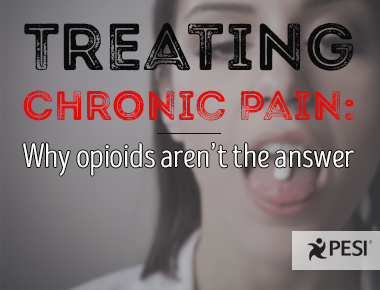My Journey as a Doctor Treating Pain
What science has taught me about pill-free approaches to pain management

Studies have shown that the most common reason that people go to the doctor is for pain. As a family physician for almost 30 years, I thought I knew how to treat pain. I did not.
When I expanded my practice in 2004 to treat those with opioid use disorder, I realized that about 50% of those I was treating had developed their addiction because of inappropriate opioid prescribing by their doctors. They had no intention of abusing or becoming addicted to opioids.
I began to do exhaustive research of the medical literature to understand why this was happening, and I learned about the current model of pain widely recognized by the scientific community but unknown to me — Central Sensitization.
Central Sensitization (CS) is the most common and the most problematic cause of chronic pain. The somatosensory nerves in the brain become extra sensitive and fire when they should not, resulting in real pain even though the problem does not originate where we feel the pain.
For example, if the somatosensory nerves located in the region of the brain that feels pain in the neck become abnormally activated, real pain is felt in the neck: it is not imagined, but does not originate from actual damage in the neck.
In this example, we see that CS pain does not occur because nerves are damaged, but because they have changed — altered by some outside factor.
Of the various types of chronic pain, CS pain is by far the most significant and is the major component in chronic back pain, chronic daily headaches, whiplash, and fibromyalgia.
In my new book co-authored with Martha Teater, MA, LMFT, LCAS, LPC, Treating Chronic Pain, we provide The Central Sensitization Inventory (CSI) to determine severity of CS pain. From this book, you can determine how much CS pain is contributing to a client’s pain.
If you want to learn more about the CSI Inventory—please click here.
How to Treat CS Pain
We don’t know everything that can cause CS pain but suspect that childhood trauma, adult trauma, prolonged exposure to opioids, and prolonged exposure to pain are some of the triggers.
We do know that there are no pills or surgery that can fix this — but behavioral therapy can.
Functional MRI studies have shown that Cognitive Behavioral Therapy (CBT) and Mindfulness training repair the broken neural pathways of CS.
In Treating Chronic Pain, you can learn CBT and Mindfulness tools and strategies that are straightforward, clear and client-led. You can use the worksheets, guides, and exercises featured in the book to help relieve CS pain and move clients from hurt to hope.
When working with chronic pain, we must remember: The research is compelling and the science is clear. Opioids are not the most effective pain medications, and behavioral treatment is the most powerful tool we have to improve functioning and help people live more fully in spite of having pain. The CDC recently confirmed this in their 2016 CDC Guideline for Prescribing Opioids for Treating Chronic Pain.
This is new information based on several years of solid research. Medical and behavioral health professionals are just now learning the most effective ways to treat pain. I understand that as new evidence comes out supporting evolving treatment approaches it may take us a while to truly embrace the truth about what works. I encourage you to dive into the research and read our book to arm yourself with proven approaches that work far better than what we’ve done in the past.
My hope is that you will be open to learning, as I have, what the science shows us are the most effective ways to treat pain. By doing this we can ease the suffering of millions of people.
Don Teater, MD, MPH, is a practicing physician specializing in the treatment of chronic pain and opioid use issues. He has worked with the National Safety Council, CDC, WHO, and multiple medical groups, non-profit organizations and governmental bodies on these issues. He is the coauthor of PESI’s recent release, “Treating Chronic Pain: Pill-Free Approaches to Move People from Hurt to Hope.”


